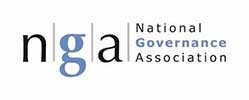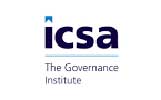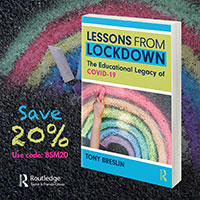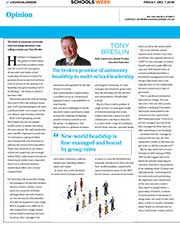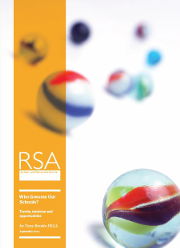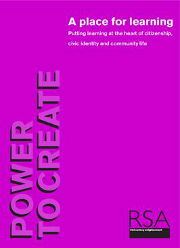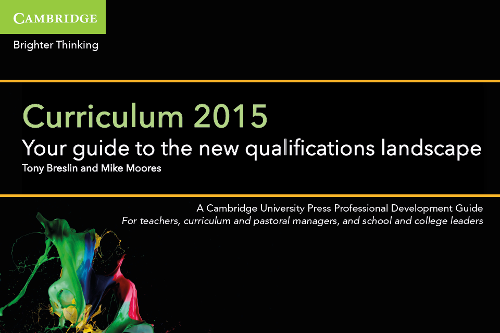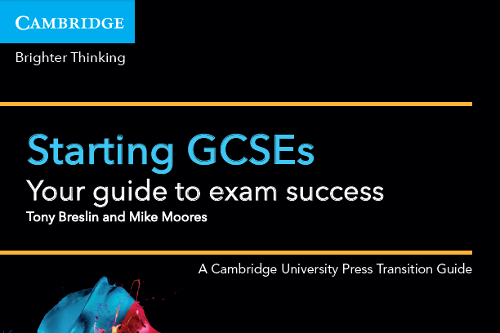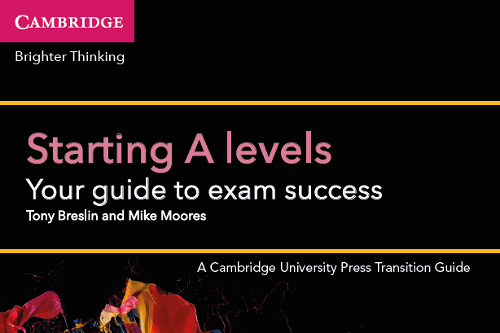












6.3% of the top 500 charities in Wales have BAME trustees, compared with 8% of FTSE 100 companies
Inclusive Boards, 2018

"One of the most common questions I get asked, especially by parents on the gate, is 'What do you do as a (school) governor?'"
Dan Hall
Bushey Primary Education Federation
Transform Governance is a joint venture between Breslin Social Impact and Permuto Consulting


Need consultancy support? We have access to a range of specialists across sectors, across functions, and across the UK and beyond. Contact us to explore possibilities.
Should I stay or should I go?
Wednesday 20th May 2020

Should I stay or should I go now?
If I go, there will be trouble,
And if I stay, it will be double!
The Clash, 1982
Not your everyday start to an educational blog, but not an everyday dilemma – the proposed partial ‘re-opening’ of primary schools from June 1st and secondary schools a week later. In this piece I want to explore some of the challenges that face children, parents, teachers, Heads and school governors as, with the virus apparently subsiding and those vulnerable to it becoming more clearly identifiable, lockdown eases. But first, in the spirit of good governance, I ought to express a conflict of interest or three: I’m a school governor, the parent of a child in one of the recalled cohorts, and the husband of a Headteacher. Oh, and a fourth: I’m a teacher by background, so you can guess where one set of sympathies lie.
It seems to me that this is as much about answering a series of questions as passing a series of tests. So, here’s just six of the many flying through my mind at present:
1. Which specific cohorts have been identified for recall, and what is the educational justification? At the time of posting, the proposal remains that Reception, Year 1 and Year 6 pupils in primary schools, and Year 10 and Year 12 students in secondaries are recalled. The educational rationale for recalling Year 10 and 12 students is clear enough. These students have missed out on a term or so of GCSE or A level work, and the notion of ‘catch-up’, although often used spuriously in this debate, has some merit, even if moving the examining period for 2021 back from May and early June to June and early July might prove at least as effective. The case for Year 6 also has validity – in what would normally be the post-SATs period, the final summer term in primary or junior school is an important time for transition planning and getting children ready for the switch to secondary education, for the children and their teachers and teaching assistants to celebrate their progression on from primary schooling (in normal times, through performances, parties and sports days), and for the children to bid farewell to their primary school friends and those who have taught them as they head off, in many cases inevitably, to a variety of secondaries. The educational case for selecting children in Reception and Year One is much flimsier, and, of course, social distancing is a non-starter amongst those so young; ironically the social case for getting these children together, though, remains a powerful one.
2. Is the re-opening the precursor to a return for other year groups? To some degree, this will depend on the extent to which parents buy-in to this call to return. As I have remarked previously, policymakers seem to think that fear can be switched on and off like a tap; in truth, this is likely to be especially difficult within the context of a national culture that has spent three decades becoming progressively more risk-averse. With evidence of significant parental concern still out there, a carefully choreographed, socially spaced re-opening may be in vein if the return to school amounts to a trickle rather than a flood. And, given the need to group pupils into smaller, socially spaced classes (or ‘bubbles’), the prospect of a full return does not appear viable – at capacity, schools would essentially need to at least double the number of working rooms to accommodate the same number of learners (some schools are talking about eight pupils per room to meet the spacing obligations, although practice is likely to vary widely on this), and in primary schools, the proposed teaching of just three of seven-year groups is already testing those spending their time relocating desks, displays and children’s work. But if we assume that parents buy-in, pupils turn-up, schools can fit them in, and teachers and other school staff put aside their (entirely legitimate) concerns for their own wellbeing (and that of their families), will it all be educationally worthwhile?
3. What kind of educational provision will the returning cohorts receive? Although there have been criticisms of schools’ online provision during lockdown, notably from educational ministers who, whatever their achievements in building schools for the future, failed to either foresee or lay the foundations for greater online learning capacity during their own time in office, the strides taken by many schools and many, many teachers and school leaders in the space of a couple of months has been transformative. This raises the question of how much better a socially-spaced and possibly sparsely attended return will be than some of the high quality and highly innovative teaching that a significant proportion of the profession are now delivering; certainly, socially-spaced classrooms are likely to cut against much of the collaborative and group-based work at the heart of the best educational practice. Moreover, the possibility of sparse attendance begs a further question: is it practical or reasonable to ask teachers to now produce a dual curriculum: one face-to-face for those who show up and one for those who stay at home, especially one in which both strands are of comparable quality and impact? Doubtless some schools will prove me wrong, but my sense is this is a big call to a profession who many have not noticed have worked through the lockdown and their Easter holidays to serve the needs of the children of other key workers, and those deemed ‘vulnerable’. That schools are re-opening is of course a misnomer; they’ve never actually closed. Maybe the energy now being put into what might look like a tokenistic gesture involving a handful of year groups would have been better put into two things: first, further enabling teachers to refine their often newly-found (or at least newly-deployed) online teaching skills so that these become a positive addition to the pedagogical toolkit, post COVID-19; second, putting greater energy into a cohort not defined by age, but by circumstance. It is to this issue that I now turn.
4. What about social justice? Every cloud has a silver lining, and just maybe the silver lining here lies in the new embrace around social justice for the educationally disadvantaged or excluded that seems to be emerging across the political spectrum. Let’s be clear, the experience of lockdown for our children and young people is not universal; for some, the experience is traumatising and isolating; for others, freedom from the institution that is school is liberating, for others, home learning has been a revelation that they may stick with after the virus has passed, and for some, the one-to-one tuition and/or the increased family time is a blessing, albeit a short term one. Nonetheless, it is beyond contention, that by-and-large those who are losing most – educationally, emotionally and socially – through this period are disadvantaged students, especially those living in poor housing, deprived neighbourhoods and/or difficult family settings, while those who are gaining most are the better-heeled children of the middle classes. But it was ever thus, and, throughout this period in any case, schools have been open to many of these children and young people. Interestingly, though, significant numbers of these so called ‘vulnerable’ children have not turned up during the lockdown period; is calling back pupils in certain groups likely to address this? The Pupil Premium gap didn’t emerge with COVID-19 and it won’t, without multiple other interventions – more personalised, more out-reach focused, more mentor and tutor supported – disappear after the virus passes or because a minority of these children might return to the classroom now (which they might, given that their ‘vulnerability’ will not be so publicly badged, much as free school meals were in the 1970s). We need to hold on to the return of the lexicon of social justice to the policymaking agenda post COVID-19 but, whatever we do in the next few weeks, it is arguable whether or not this will have a profound impact. The river of educational disadvantage runs longer and deeper than that, and has many tributaries.
5. Is this really about childcare and economics, rather than education? Yes, of course! Those of us who make our living in education have often resented those ‘snow day’ television news interviews in which parents ruminate on not being able to get to work because their child’s school has closed, but the truth is that the virus has exposed the multiple functions of schooling that we have too long denied: enabling parent engagement in the labour market, providing a daily meeting place at the school gate, creating a social space in which children can grow into adulthood. For many of those children and young people who are struggling most during the lockdown, it is the social function of schooling that leaves the biggest gap – the craic of schooling, not the grades generated, a fact long-ignored by the narrowness of the standards agenda and the marginalisation of the social curriculum. Of course, the grades matter, but the narrative of ‘catch-up’, as colleagues in a recent meeting of the rejuvenated Fabian Society Education Group framed it, is secondary – at least at this point in time – to many of these pupils. Perhaps if the re-opening were focused on addressing these social issues, it might find broader support; the learning can wait – let’s focus on the loneliness (and the lonely and isolated) for now, and free their parents to return to work in the process, possibly irrespective of their occupation and the year group that their children fall into.
6. Is it safe for teachers, children and young people or parents gathering at the school gate to return? The truth is we do not know, although there is a widening sense that, if the virus is going to take many more months to defeat, we will need to develop strategies across various walks of life to live with it, and education will not be immune from this need. Teaching and learning strategies that are more online, targeted and personalised will have a part to play in this, and might make their greatest contribution yet in the academic year starting in September 2021, but educational professionals are right to be cautious and concerned, and our policymakers ought to focus on reassurance rather than castigation in their responses to this. There isn’t a teacher who doesn’t want to teach, or a school leader that doesn’t want their school fully open and operating at capacity for all children, but we need to achieve this at a pace that brings parents and the profession with us; building this support should consume our energies over the months ahead. Will opening school doors a shade wider in early June provide the impetus to enable this, or does it box us into a false dawn and a corrosive dispute between, as the Daily Mail has already framed it, parents and teachers? Only time will tell, but it would be wise to remember that many of us wear both of those hats, and more.
Tweet Share on Facebook

